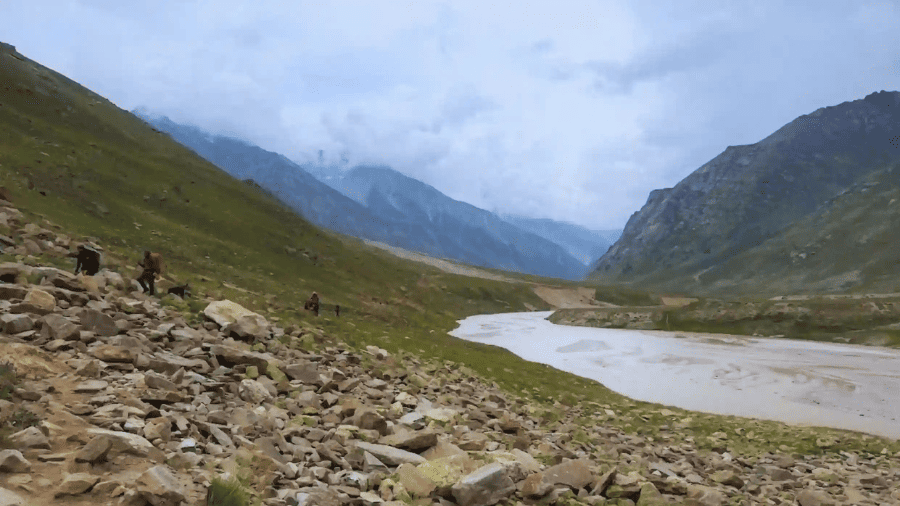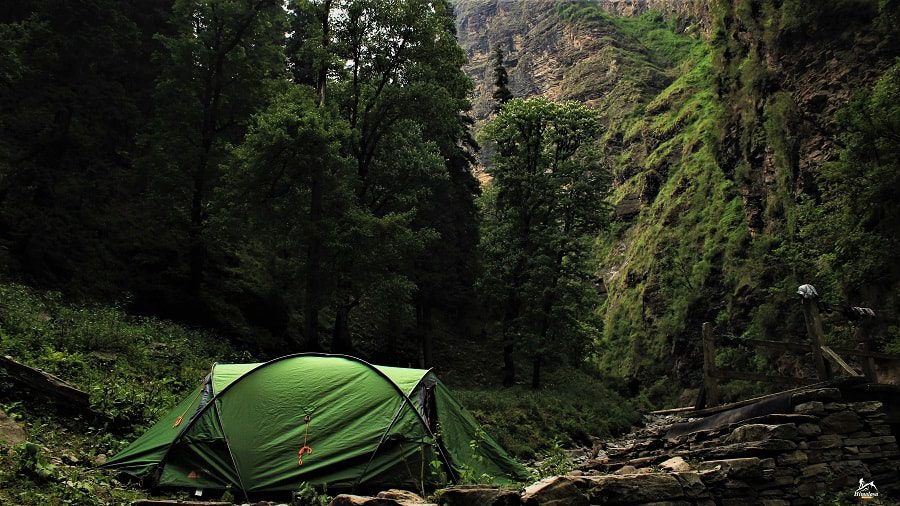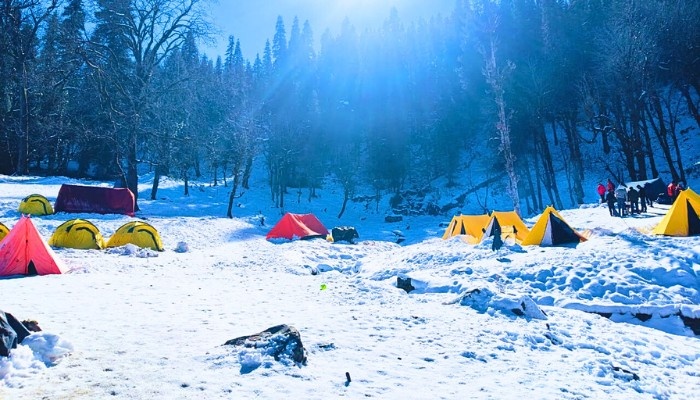
Birth Of Himalayas An Art By Mother Nature :
The Birth or Beginning of the Himalayas:
The Birth of the Himalayas started 200 million years ago during the late Palaeozoic and Mesozoic Era. The world map we see today was completely different, continents were altogether at different places and sizes. Pangaea was the only existing land mass at that time, it was one supercontinent, after which it broke into smaller land masses, including Laurasia in the north and Gondwana in the south.

Journey of The Indian Subcontinent:
Gondwana, Present day Africa, South America, Antarctica, Australia and the Indian subcontinent split about 140 million years ago, the Indian Plate broke away from Gondwana and started its journey to the north across the Tethys Sea an ancient ocean which existed between Laurasia and Gondwana.
The Great Collision: India meets Eurasia!
Himalayas later took birth at around 50 million years ago, when the Indian plate sled northward at an impressive speed of 15 centimetres per year and eventually collided with Eurasian plate. This was the event which marked the beginning of the formation of the Mighty Himalayas.
The collision between the two plates India and Eurasian was not a simple one, it was complex and astounding! As the plates hit, the Indian plate began to dive beneath the Eurasian plate, this process is termed as subduction. Thanks to continental crust of both plates which is buoyant, the Indian plated did not easily sink into the mantel, instead the both crusts buckled, folded and were sprung upward giving birth to Himalayan Mountain range.
The Mighty Divisions: Trekking the Roof of the World
The Himalayas split into four unique regions: The Himalayas split into four unique regions:
Trans-Himalaya:
Located north of the main range, this area consists of the Tibetan Plateau and India’s Ladakh range for a magnificent view of hardness.
Greater Himalaya:
It is in this section that some of the loftiest summits such as the Everest and the Kanchenjunga can be found and all in all, it is this section that almost spells out the steep and soaring profile of the entire chain.
Lesser Himalaya:
This is the region that comprises of approximately mid-sized mountains lying in between the Greater Himalaya and the lower foothills and acts as favourite trekking zone where popular places like Manali, Mussoorie are seen.
Outer Himalaya (Shivalik’s):
With less steepness, it is the location of environmental abundance and ranked as the lowest range of the Himalayas at the foothills.
Continuous Evolution: The Himalayas today:
This process of the formation of the Himalayas has not ended even today. The plates are still moving and the summit of the Himalayas also goes on to grow at an approximate rate of 5mm per year. This current tectonic activity makes the region amongst the most active seismic zone in the world and there is always an occurrence of earthquakes and other forms of geological instabilities.
This paper will further discuss Erosion and Glaciation and the part played by them in the world.
Thus, tectonic forces are thought to have been responsible for the lifting of the Himalayas while erosion and glaciation are strongly involved in modelling the shape of the present structure.
The monsoon rains are heavy and coupled with the strength of the rivers which originate from the himalayan slopes the mountains are cut by the rivers and form deep valleys and gorges. Glacial process again modifies the topography and forms such essential features as cirque, moraines and U-shape valleys and so on.
A Geological Laboratory
The look of the Himalayas provides a precious chance as for the geological processes dragging on at present. From them, one can learn much about plate tectonics, how mountain chains are produced, and how the earth’s crust alters in time. Marine fossils which are found at high altitude also provide information about the Tethys Sea and changes of the Earth’s geography in the geological past.
An Insight into Life: Plant life and animal life
The plant life and animals of the Himalayas change drastically with elevation and climate:The plant life and animals of the Himalayas change drastically with elevation and climate:
Lower Altitudes: Here, oak, pine and bamboo prevail creating homes for a lowland region’s cool-residing inhabitants such as the red panda, black bear, and numerous birds.
Mid-Altitudes: It is characterized by the alpine pastures, coniferous belts which are home to some of the endangered animals like snow leopard and blue sheep as well as small treasures in the form of medicinally important plants.
High-Altitudes: Beneath the trees one comes across some of the most resistant bushes and lichen and the movement of animals such as the Himalayan Thar as well as the formidable Himalayan wolf.
The New Geographical Characteristics and Climate
The colourful vales give way to dense forests on one hand and sharp, sparkling, snowy and rugged terrains on the other. The climate is just as diverse: The climate is just as diverse:
Foothills: Sultry, tropical climate manifested through high humidity and a significant amount of precipitation is characteristic of this region.
Mid-Altitudes: Undergo seasonal changes from cold to warmer similar to the by seasons in the different parts of the world.
High Altitudes: In this elevated region you will find extreme cold, intense wind as well as high levels of snow fall as depicted from this alpine climate.
Major Himalayan diversities across India:
1. Kumaon Himalayas (Uttarakhand, India)
Flora & Fauna: Forest area consists of Pine, Oak and Rhododendron; wildlife consisting of Leopard, Himalayan Black Bear and the birds.
Terrain: Often rocky and /or mountainous with steep valleys and high mountains.
Weather: Cold winter; moderate summer monsoons and heavy rainfall.
Top Treks:
Pindari Glacier Trek: Tourist attraction of a passage to the Pindari Glacier.
Nanda Devi East Base Camp Trek: Reach the Nanda Devi East Peak base camp.
2. Northwest (Himachal Pradesh, India)
Flora & Fauna: Pine, deodar, oak; wild animals are snow leopards, Himalayan tahr and many more types of pheasants.
Terrain: Rugged terrains which include steep valley, high peaks and glacier.
Weather: The above climatic conditions in relation with the four seasons are Severe winter, moderate summer and monsoons.
Top Treks:
Hampta Pass Trek: Road trip from Manali to spiti valley.
Beas Kund Trek: Go on a trek up the source of the river Beas.
3. Sikkim Himalayas (Sikkim, India)
Flora & Fauna: Subalpine; rhododendron and magnolia forests; animals: red panda, snow leopard, yaks.
Terrain: New peaks, Three, prominent valleys, and highly elevated meadows.
Weather: Cold: Winter season, Mild: Summer Season, Heavy: Monsoon Rain.
Top Treks:
Goecha La Trek: It is suggested to trek to the base of Kanchenjunga.
Dzongri Trek: It is a shorter trek with breathtaking views of the McAlpine Range of the great Himalayas.
4. The East Himalayan Region particularly in the state of Arunachal Pradesh, India
Flora & Fauna: South temperate to boreal forests ; clouded leopards, red panda, and other avian species.
Terrain: Varied from sub-tropical valleys to alpine pastures.
Weather: Intense rainfall, winter season and moderate summer season.
Top Treks:
Tawang Trek: To reach Tawawng monastery one has to trek through Scenic routes.
Sela Pass Trek: Trekking specifically at the Sela pass.
5. Ladakh Range (Ladakh, India)
Flora & Fauna: Little vegetation cover; snow leopard, tibetan wolf, antelope, ibex.
Terrain: Arabian Desert, mountainous areas and valleys of rugged topography.
Weather: They experience very cold winter and very warm summer accompanied by very little rain.
Top Treks:
Chadar Trek: April walking on the snow-covered Zanskar gorge ice.
Markha Valley Trek: A well-known and rather long trek that passes through valleys and typical mountain villages.
6. Pir Panjal Range (Jammu and Kashmir, India)
Flora & Fauna: Temperature coniferous forest biomes; musk deer, the Himalayan brown bear, and stone pheasant.
Terrain: This refers to, gentle slopes, deep gorges, and high passes as mechanisms of transporting large quantities of water.
Weather: Cold winters, pleasant summer and Monsoon Rain.
Top Treks:
Kashmir Great Lakes Trek: Hike across fresh water lakes that have just been formed.
Tarsar Marsar Trek: Trek to two alpine lakes.
7. Zanskar Range (Ladakh, India)
Flora & Fauna: Alpine meadows, sparse vegetation; snow leopards, Himalayan ibex.
Terrain: Rugged mountains, deep gorges, and high passes.
Weather: Cold and dry climate, harsh winters.
Top Treks:
Phuktal Monastery Trek: Trek to the remote Phuktal Monastery.
Darcha Padum Trek: Classic trek connecting Himachal and Zanskar.
8. Karakoram Range (Pakistan, India, China)
Flora & Fauna: Sparse vegetation; snow leopards, ibex, and Marco Polo sheep.
Terrain: Steep, rugged peaks, glaciers, and deep valleys.
Weather: Extremely cold winters, short summers.
Top Treks:
K2 Base Camp Trek: Trek to the base of the world’s second-highest peak.
Gondogoro La Trek: Challenging trek with breathtaking views.
9. Hindu Kush Range (Afghanistan, Pakistan)
Flora & Fauna: Mixed forests; snow leopards, ibex, and Marco Polo sheep.
Terrain: Rugged mountains, deep valleys, and high passes.
Weather: Harsh winters, moderate summers.
Top Treks:
Noshaq Trek: Trek to the highest peak in Afghanistan.
Khyber Pass Trek: Historical route with stunning views.
10. Trans-Himalayan Range (Tibet Autonomous Region, China)
Flora & Fauna: Sparse, high-altitude vegetation; Tibetan antelope, wild yaks.
Terrain: High-altitude plateaus, rugged mountains.
Weather: Cold and dry, extreme winters.
Top Treks:
Kailash Mansarovar Trek: Pilgrimage trek around Mount Kailash.
Everest Advanced Base Camp Trek: Trek on the Tibetan side to the advanced base camp of Everest.
11. Nepal Himalayas (Nepal)
Flora & Fauna: Biodiversity ranging from tropical forests to sub alpine regions; has Rhododendrons, Tigers, Snow Leopards, Red Panda etc.
Terrain: Mountain ridges, mountain gorges, low temperature, snow, forests.
Weather: Cold winter season, moderately warm to hot summer, very wet monsoon season.
Top Treks:
Everest Base Camp Trek: Yak business of Pang: Additional climbing at the base of the world’s tallest peak, Mount Everest.
Annapurna Circuit Trek: The most popular one being the one around the Annapurna massif.
12. Comprising the areas of Jammu and Kashmir and Himachal Pradesh in India
Flora & Fauna: Pine, deodar forests; leopards, brown bears and many types of birds.
Terrain: Rocky, mountains, and scrubs with varying heights and steepness of inclines.
Weather: Savalj, pleasantly warm in summers, monsoon rains.
Top Treks:
Stok Kangri Trek: Exhaustive climbing up to the top of Stok Kangri peak.
Pin Parvati Pass Trek: Strenuous hikes through all the terrains.
13. Bhutan Himalayas (Bhutan)
Flora & Fauna: Coal and barren land; meadows; takin, snow leopard, and black necked crane.
Terrain: terrain of gigantic rocks, steep gorges, and elevation gradients.
Weather: Cool and sometimes even cold winter, moderately warm summers, and heavy monsoons.
Top Treks:
Snowman Trek: It is listed and considered to be one of the hardest treks in the world.
Jomo Lhari Trek: Eco-tourism is evident in a trail up to the actual base of Jomo Lhari feature.
14. Central Himalayas (Nepal, India)
Flora & Fauna: Ranged from subtropical to alpine; contain rhododendrons, Red Panda, and Himalayan tahr.
Terrain: Mountains, glaciers and rich and beautiful foliage.
Weather: Cold winter season while summer season is relatively moderate and monsoon is heavy.
Top Treks:
Langtang Valley Trek: Safari in the exquisite Langtang National Park.
Manaslu Circuit Trek: Still, more deserted a tour around the peak of Manaslu.
15. Outer trans-Himalayas and Shivalik’s (India, Nepal, Bhutan)
Flora & Fauna: Sub tropical category of Forests; has elephants, leopards and many species of birds.
Terrain: Slopes, steep gradients and regions with trees and shrubs.
Weather: Gentle winter and scorching summer and monsoon season which is very rainy.
Top Treks:
Churdhar Trek: Go Mountain climbing to the highest peak in the outer Himalayas.
Kalsubai Trek: It is also well-known trek in the Shivalik region.
16. Garhwal Himalayas (Uttarakhand, India)
Flora & Fauna: Stands of oak, pines, rhododendron; snow leopard, black bear, monal.
Terrain: Mountain top, dales, snowy fields and grassy lands.
Weather: Hear winters, relatively warm summers, heavy rainfall in monsoon season.
Top Treks:
Valley of Flowersk Trek: A nice walk through some ancient facility which makes this a UNESCO world heritage site.
Kedarkantha Trek: Challenging winter trek though quite famous for the stunning views which it offers.
Lesser-Known Facts
1. Secluded Valleys and Ancient Monasteries:
The Himalayas, spanning across India and beyond, harbor hidden valleys and ancient monasteries that remain largely uncharted. The Beyul, or sacred secret valleys, are considered havens and spiritual retreats in Tibetan Buddhism, offering mystical experiences to those who seek them.
2. Majestic Glaciers:
The Himalayas boast the largest collection of glaciers outside the polar regions. These colossal ice formations are vital, as they nourish major river systems in Asia, including the Ganges, Indus, Brahmaputra, and Yangtze, shaping the landscape and livelihoods in India and neighboring countries.
3. Yeti Tales and Folklore:
The legend of the Yeti, often dubbed the Abominable Snowman, captivates imaginations in the Himalayas. This elusive creature has been woven into local lore for generations, inspiring countless expeditions to uncover the truth behind its existence.
4. Adaptations to Altitude:
High-altitude dwellers of the Himalayas, such as the Sherpas, possess remarkable physiological traits that enable them to flourish in low-oxygen settings. Their larger lung capacity and enhanced oxygen metabolism set them apart from those living at sea level, revealing the wonders of human adaptation.
5. Healing Herbs and Remedies:
The Himalayas are a goldmine of medicinal plants. Many local herbs play a crucial role in traditional medicine systems like Ayurveda and Tibetan remedies. Yarsagumba, a unique fungus that thrives on caterpillars, is particularly prized for its alleged health benefits.
6. Distinctive Himalayan Salt:
Renowned for its unique taste and mineral richness, Himalayan pink salt is sourced from the historic Khewra Salt Mine in Pakistan. This vibrant salt is formed from ancient seas that existed over 250 million years ago, making it a fascinating culinary staple.
7. World’s Highest Airports:
Among the dramatic peaks of the Himalayas are some of the highest airports globally, including Tenzing-Hillary Airport in Lukla, Nepal, and Leh Kushok Bakula Rimpochee Airport in India. These airports present extraordinary challenges for pilots due to their elevation and rugged landscapes.
8. Melodic Himalayan Singing Bowls:
Integral to Tibetan Buddhist practices, Himalayan singing bowls create soothing sounds and vibrations believed to foster relaxation and healing. These unique bowls, made from a blend of metals, are played by striking or gently rotating a mallet around their rim, creating an enchanting auditory experience.
9. Vibrant Festivals:
The culture of different ethnic groups that resides in the Himalayas is effervescent with enormous number of colourful festivals. Probably the most famous of them is the Hemis Festival in Ladakh that re-enacts the birth anniversary of Guru Padmasambhava through the means of animated masked dances and rituals. On the other hand, Paro Tshechu of Bhutan is mainly a spectacle full of mask dances and many cultural performances.
10. Historic Trade Routes:
It might come as quite shocking to learn that these proud mountains have always been passage ways to several historical trade trails among them the globally recognized Silk route. Many of these linked facilitated the flow of products, technologies, knowledge as well as cultural and artistic interactions between the Indian subcontinent, Central Asia and the rest of the world.
11. Pangong Lake:
Surrounded by mountains, approximately at an altitude of 4,350 meters (14,270 feet) above the sea level, Pangong Lake is among the world’s highest saltwater lake. It lies between India and China and has earned its fame due to its marvellous deep blue color that varies depending on the hour of the day.
12. Himalayan Honey Hunters:
In Nepal, there is an old practice where the honey hunters must climb a steep cliff and chase crows to get wild honey from giant bee combs in the mountains. This practice is not only a traditional rate, but it plays a significant role in earning revenues for the people living in this area.
13. Ancient Fossils:
The Tethys Sea is administrated to have existed over the Himalayan Mountain nonetheless, its fossils such as ammonites are recognizable indicating the historical past of the area.
14. Kumari – The Living Goddess:
As a special cultural practice, Nepalese treat a young girl called Kumari as goddess Taleju and she is an idol. The Kumari lives in a palace in Kathmandu and comes out for spiritual events in celebration of the various festivals.
15. High-Altitude Railways:
The Railway known as the Qinghai-Tibet line, starts from Xining in the province of Qinghai and extends up to Lhasa in Tibet and is the highest railway in the world. This great journey through the plateau land indicates spectacular sight of the Himalayan range.
Conclusion:
These mountain ranges are considered to be beautiful and dangerous for, often in the same breath. Tourists love to climb these mountains and consider the adventures, but it’s vital to acknowledge that many of them are fatal. It is for this reason that each mountain range poses different and dangerous challenges, be it the heights of the Himalayas or the weather of the Andes. I hope you enjoyed this blog on the Birth of the Himalayas, which briefly covers the types and some lesser-known facts about them.
Contact Details:
Himalaya Shelter organizes customized trekking programs for Winter treks, Summer treks, Monsoon treks, High mountain passes treks, Glacier treks, Cultural Exploration treks, and many others. With Himalaya Shelter, you can expect to get the best trekking experience by trekking with trained trek leaders, getting excellent quality equipment, and enjoying delicious meals while savouring the beauty of Mother Nature. For more details Contact Us on…
Contact No: +91 9458386006
Email ID: info@himalayashelter.com
In Himalaya Shelter, we provide you with the option to customize your trekking experience. Whether you’re a solo traveller, a group of friends, or a family, you can opt for our personalized tailor-made trekking program. This customized trek will be exclusively designed for you, taking into account your specific requirements for transportation, accommodation, meals, and any other premium facilities you may need during the trek. No other participants will be added to your group. Choosing a customized trek will enable you to fully enjoy the trek with your loved ones.
About Author

Himalaya Shelter
Recent news

23 Dec 2025

20 Dec 2025

18 Dec 2025

16 Dec 2025

10 Dec 2025
Recommended Treks

Cost: ₹11,299 | $125.46
Type: Easy
Best Time: Jan | Feb | Mar | Aprill | May | Jun | Sep | Oct | Nov | Dec

Cost: ₹9900 | $114
Type: Easy
Best Time: April to June and September to November




